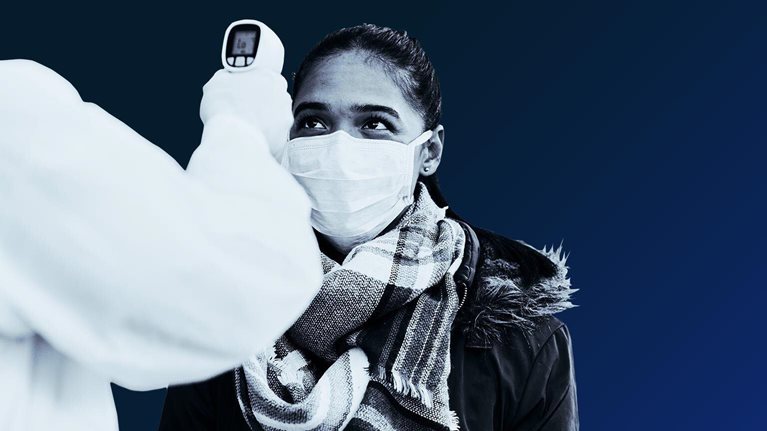As healthcare providers face the humanitarian tragedy of the COVID-19 pandemic, they also face unprecedented stress (individually and institutionally) around the world. The immediate response to the crisis is causing seismic shifts in how and where care is provided.
Established norms and operational best practices are being revisited. Simultaneously, new initiatives are helping provide both lifesaving care for those directly impacted and routine care for patients whose regularly scheduled visits with their providers have been interrupted.
CEOs and leaders of healthcare provider systems worldwide are dealing with unprecedented levels of demand in their hospitals and grappling with questions about how to provide optimal care. They also face pressing questions about what the future of healthcare provision may look like in a post-COVID-19 world.
The experience of the last few weeks and months has demonstrated the potential for fundamental shifts across the care continuum. These shifts include the design and construction of facilities, the training of healthcare workers, sourcing and inventory management of critical care equipment and personal protective equipment (PPE) materials, and the optimal settings for care delivery and how it is reimbursed. Some of these shifts were underway before the pandemic was declared and likely will now be accelerated.
The healthcare response to COVID-19 will remain a priority for an anticipated 18 to 24 months, as countries implement phased relaxations and restrictions to suppress the virus, expand testing and treatment capacity, and find better therapies. The future success of providers may be determined by their ability to adjust to the next normal, dealing with a specific set of new or accentuated challenges, and capturing new opportunities at speed.
We identify three key shifts across the healthcare delivery value chain, which are particularly applicable in the Middle East, Africa, and Asia:
- New paradigms for infrastructure, geographic distribution of providers, and care settings
- Operational excellence, which will be critical in the next normal
- Emergence of new growth opportunities and diversification
While we focus on successful actions from developed markets, the magnitude of these shifts will depend on the specific context in each geography, including whether the market is developing or established.
Would you like to learn more about our Healthcare Systems & Services Practice?
1. New paradigms for infrastructure, geographic distribution of providers, and care settings
1.1. Flexible design and construction of greenfield facilities designed to enable faster re-purposing of beds
- Greater agility in how hospitals are constructed is now a prime focus. Designs that maximize infection control (for example, more single rooms, flexible HVAC systems) as well as how capacity for intensive/critical care is integrated into the hospital layout and user experience, with the ability to quickly convert regular beds to intensive/crucial care beds, will be given more importance. Providers may need to examine their ability to scale up and create multifaceted resources.
- Providers with large footprints in locations with an already strained intensive care unit (ICU) capacity may consider establishing intensive care hubs of excellence. These hubs may be centralized rather than spread through all their institutions. This centralization can create benefits of concentrating expertise and capturing economies of all types (not just of scale), and can also offer the opportunity to leverage remote monitoring technology that improves economies of scale for scarce skills.
- A shift toward virtual ICU (that is, eICU) models is underway. Mercy Virtual in Pennsylvania1 is an example where patients are at home and intubated with a nurse in attendance while critical care specialists monitor patients remotely.
1.2. Delivery of elective care in dedicated facilities
- While elective care is curtailed/postponed across many countries, patients requiring high risk/complex care, such as those with cancer, may not be able to wait for treatment. One potential response is dedicating specific areas, either within hospitals where COVID-19 patients are managed or in dedicated non-COVID-19 facilities, where elective care may be delivered. These facilities may become a permanent feature of the future healthcare landscape.
1.3. Acceleration of the online-offline integration
Numerous examples exist worldwide of virtual care—sometimes supplemented with artificial intelligence—that is now the first point of interaction for nonacute care.
- A single, digital-first “front door” for health services is being established. The patient journey starts with an app or online and is then redirected to the optimal care setting regardless of physical or virtual modality. Multiple providers of digital solutions have been working with the National Health Service (NHS), for example.
- Massive expansion of home-based care likely will be supplemented with artificial intelligence (AI). Virtual care via AI, phone-based diagnostics, and other virtual patient engagement platforms are expected to be part of this expansion.
1.4. Separation of ancillary functions, such as imaging and lab tests, from core hospital operations
- In countries where these ancillary functions are still an integral part of the hospital operations (and are physically co-located in a hospital), their separation may be accelerated by the demand for more capacity for diagnostic testing during the emergency response to COVID-19. Providers may also see increasing demand for online consultation activities.
- Growing categories of remote/online services will naturally require more input of clinical information. Some basic services can be fed through home-based devices, but more is expected to be collected through specialized facilities available in convenient locations, such as pharmacies, imaging centers, and pathology labs.
1.5. Accelerated transition to ambulatory care and day surgery
- Inpatient stays are likely to remain undesirable. Patients may choose to avoid hospital stays whenever feasible, accelerating the transition to ambulatory care settings for increasingly complex care and procedures.
2. Operational excellence, which will be critical in the next normal
The financial performance of providers in the coming years will be impacted by several factors, including the macroeconomic performance and recovery of the country, the pace at which elective care returns, and the agility of the leadership in adapting their operating models to these changing circumstances.
2.1. Prolonged revenue growth challenges
Revenue growth may remain challenged for a prolonged period, driven by the overall pace of the economic recovery and specific trends related to private providers.
- Gross Written Premiums (GWP)/premium volumes may be reduced in view of increased unemployment, challenging economic situations for employers, and the focus of public sector budgets on funding the recovery of the broader economy.
- Emergency room (ER) visits may decline or shift to online platforms given concerns about community transmission of the virus. Short- to medium-term declines in admissions for elective care/procedures are likely, which will require providers to manage operations more efficiently.
2.2. A new set of costs will challenge margins
- Labor costs may rise in some markets as healthcare worker shortages in selected disciplines emerge, particularly in critical care disciplines. A growth in task-shifting models may also follow (potentially with higher wage bills) to leverage nonspecialists (for example, primary care physicians, nurses) to deliver more complex care to patients when shortages occur.
- More sophisticated value chains may emerge. This shift could result in higher inventory costs as providers implement more stringent requirements on safety stocks of PPE and consumables needed to run cardiac care units (CCUs) and ICUs. Providers may need to develop new capabilities in dynamic inventory management to comply with local policies, monitor expired supplies, and maintain stockpiles with suppliers. Some may consider forming/joining hub-based warehouse models, where a group of smaller providers contribute to the operational costs of maintaining larger stockpiles. Having real-time inventory and supply/demand data could significantly reduce costs. Some providers also may examine expert guidelines around sanitizing and reusing supplies.
Capital expenditure costs also may increase as some providers build larger community networks or undertake necessary upgrades to existing facilities.
3. Emergence of new growth opportunities and diversification
3.1. New growth opportunities
Providers may look to new opportunities such as telehealth consultations, home healthcare services, non-ER-based primary community care, and more proactive regular health screening. Providers may be faced with several strategic choices:
- Licensing third-party telehealth services/solutions versus building their own offerings
- Expanding into community-provided primary care services focused on selected clinical disciplines (for example, pediatrics, obstetrics, gynecology)
- Expanding into the provision of remote behavioral health services and screenings, with the assumption that payers will be willing to reimburse for these services
3.2. Innovative arrangements between the private and the public sectors
Governments are already exploring innovative partnerships with the private sector to manage the crisis. These partnerships may continue in the future and could take many forms, including funded mandates for capacity:
- The NHS has secured short-term capacity (beds and critical care personnel in the private sector effectively underwriting short-term sustainability).2
The Australian government is partnering with the private sector to utilize their capacity to help manage anticipated demand in the public sector.3
3.3. Consolidation of smaller providers
- Smaller providers may struggle to remain solvent as elective care volumes decline and “discretionary” ER visits dry up. They could become the target of acquisitions by players who have the scale and balance sheets to withstand the expected upcoming financial stress. This trend is already becoming apparent, as companies across markets have issued earnings guidance.4

From “wartime” to “peacetime”: Five stages for healthcare institutions in the battle against COVID-19
Enablers to adjust to the next normal
For these shifts to happen, accelerated progress would need to be evident along several enablers:
- Technological advancements, which would include AI-based diagnostics, cloud-based storage of medical records, and integration of information across the care continuum in and outside the hospitals. Digital tools to facilitate remote communication between providers and patients will continue to be developed and improved, in conjunction with point-of-care devices and home-based monitoring devices. Additionally, real-time data can create effective use of supplies and allow staff to work efficiently.
- Greater flexibility in reimbursement models from payers, and, in particular, for telehealth and home healthcare services. This model may require payers to have evidence that telehealth is providing similar/better outcomes (for example, data indicating that more convenient refills enable better compliance among patients with chronic diseases).
- Consumer adoption, which will be driven by more informed consumers demanding a seamless technology experience irrespective of the care setting. Consumers may want the ability to have end-to-end delivery of care, including home/office delivery of medications. The ability to build trust in the new care setting is also critical to sustain the continued use of online/home-based services. New incentives and capability building to sustain the new operating model will also be needed.
- Regulatory changes to license healthcare workers with a broader set of skills, more flexibility (with a move away from set ratios/input metrics), institutions with multi-purpose beds, as well as e-prescribing and delivery of medications with more flexible use of supplies. Given the disruption of clinical trials in many parts of the world, the demand for real-world evidence may grow. Regulators may need to develop new frameworks, especially as more service activities shift from hospitals to out-of-hospital care settings.
The tremendous pressure on healthcare workers and institutions over the past few months cannot be brushed aside, especially in light of the physical and psychological toll of the COVID-19 crisis. However, as new initiatives develop in the next normal, providers will implement them and be able to treat patients across the care continuum.

